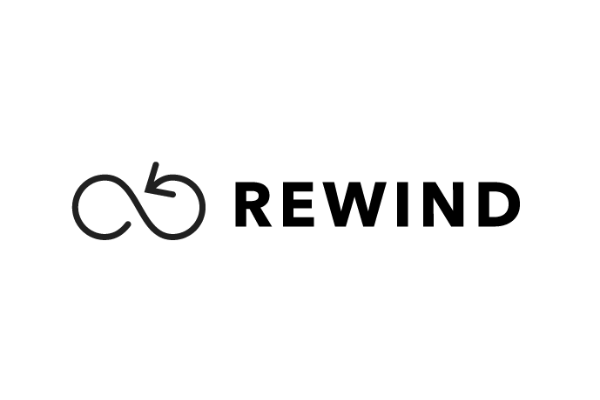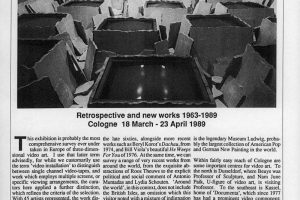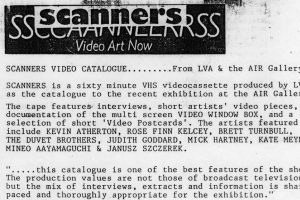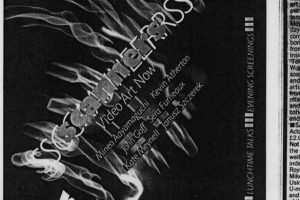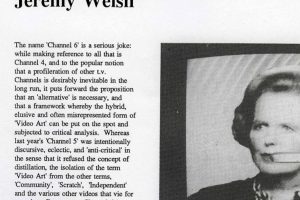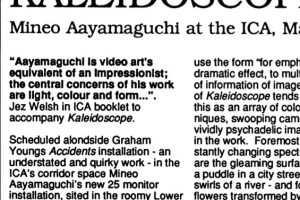Aayamaguchi, Mineo
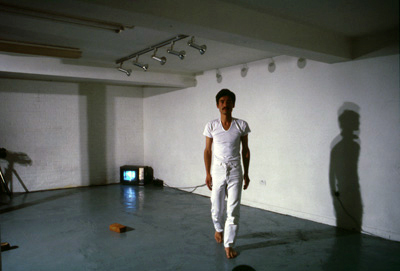
Mineo Aayamaguchi was born in Takasaki, Japan in 1953 and studied at St Martins School of Art in London, 1974-78. He was Guest Artist at ESBAP, Porto, Portugal in 1979 and Artist in Residence at the Stadtische Galerie Wolfsburg, Germany, 1981.
He lived in London from 1974-2006 and now lives in Japan.
“Aayamaguchi has worked across performance, painting, installation and video, making painterly, abstract, intensely coloured multi-monitor installations and gallery artworks. He plays with colour, texture, movement and light, pulsating in multiple layers of rhythms and motion dancing on the screens, each monitor a component part of a whole visual network.” – J.Hatfield
updated sp August 2022
-
Interview of Mineo Aayamaguchi
View the interview transcript here
-
Exhibitions:
Solo Exhibitions:
1980
Sculpture & Drawing: CAPC, Coimbra, Portugal
Sculpture & Drawing: Arvore, Porto, Portugal1985
Installation: Swansea Arts Workshop, Swansea
Installation: South Hill Park Arts Centre, Bracknell1986
Installation: Sagacho Exhibit Space, Tokyo, Japan
Installation: Midland Group, Nottingham1987
Installation: Franklin Furnace, New York1988
Video Installation: ICA, London2002
Installation & Painting: Mus»e F + Galerie Omotesando, Tokyo, Japan2005
Installation & Painting: Mus»e F + Galerie Omotesando, Tokyo, Japan2008
Installation: Takasaki-Tetsugakudo, Takasaki, Japan
Installation & Painting: Mus»e F + Galerie Omotesando, Tokyo, JapanSelected Group Exhibitions:
1978
Drawing: Whitechapel Art Gallery, London
Photograph: Royal Festival Hall, London1981
Installation: Almada, Portugal1983
Video Installation: Air Gallery, London
Installation: Pictura, Dordrecht, Holland
Installation: Arvore, Porto1985
Video: Tate Gallery, London1986
Video Installation: Air Gallery, London
Video Installation: Caf» Gallery, London
Video: South London Art Gallery, London
Video: ICA, London
Video & Drawing: Serpentine Gallery, London1987
Video: Whitechapel Art Gallery, London1988
Video Installation: Manchester City Art Gallery, Manchester
Video Installation: Third Eye Centre, Glasgow1989
Video Installation: Williamson Gallery, Merseyside
Video Installation: The Arts Council of Great Britain, London
Video Installation: Third Eye Centre, Glasgow
Video: Neuer Berliner Kunsterein, Berlin1992
Video Installation: National Museum, Singapore
Video Installation: Vila Nova de Cerveira, Portugal1993
Video Installation: Museum of Moving Image, London
Video: BBC2, U.K.Selected Performances:
1979
CITAC, Coimbra, Portugal1980
CAPC, Coimbra, Portugal
Arvore, Porto, Portugal
Galerie Diagonal, Paris
Aktionscenter, Kassel, Germany1981
Sculpture Space, Utica, N.Y., U.S.A.
Art Gallery of Hamilton, Hamilton, Canada
La Galerie Montivation V, Montr»al, Canada
Kunstverein Wolfsburg, Wolfsburg, Germany1982
Aktionscenter, Kassel, Germany
Kunstcentrum de Gele Rijer, Arnhem, Holland
La Chambre Blanche, Quebec, Canada
Franklin Furnace, New York
Air Gallery, London
Midland Group, Nottingham1983
The Basement, Newcastle upon Tyne
Pictura, Dordrecht, Holland1984
Vila Nova de Cerveira, Portugal
Franklin Furnace, New York
S.A.W. Gallery, Ottawa, Canada1985
Swansea Arts Workshop, Swansea
South Hill Park Arts Centre, Bracknell1986
Sagacho Exhibit Space, Tokyo, Japan1987
Franklin Furnace, New York -
Videography:
1982
There-Then (Video Performance with music Head Resonance)1983
Feet (Video Performance)
Pictura (Video Performance)
Flower (Video Performance)
Landscape (2 screen installation, 2 slide projector and 2 video camera)1984
Inner Colour1985
Outer Colour1986
Beyond Colour (9 screen installation, 2 videotape)
Light / Water (10 screen installation with Jeremy Welsh, 2 videotape)1988
Kaleidoscope (25 screen installation, 3 videotape)1989
Phosphor (4 screen installation, 1 videotape)1992
Foot (2 screen installation, 1 videotape)1993
Obelisk (4 screen installation, 1 videotape)
Primary Contrasting Elements (One Minute TV, BBC2) -
Artist works:
-
Artist assets:
-
Quotes:
"Mineo Aayamaguchi (b.1953 Japan) was one of the few video artists of the 1980s generation to recognise the power of abstract imagery used across a battery of screens in his sculptural multi-monitor video installations. Often his imagery was abstracted from live action, with colour heightened by fragmentation and electronic intensification and movement reflected across screens in linked and mirroring action. The nine screens of Beyond Colour (1986) - across of five screens enclosed in a square of four - were further mirrored in a grid of polished metal sheets laid on the floor; each of the 25 screens of Kaleidoscope (1998) had a metal sheet beneath it - linking the screens together in a field of changing colour. Above all, his is an art of choreography across the multiple image." - David Curtis, A History of Artists' Film and Video in Britain. British Film Institute, 2007.



